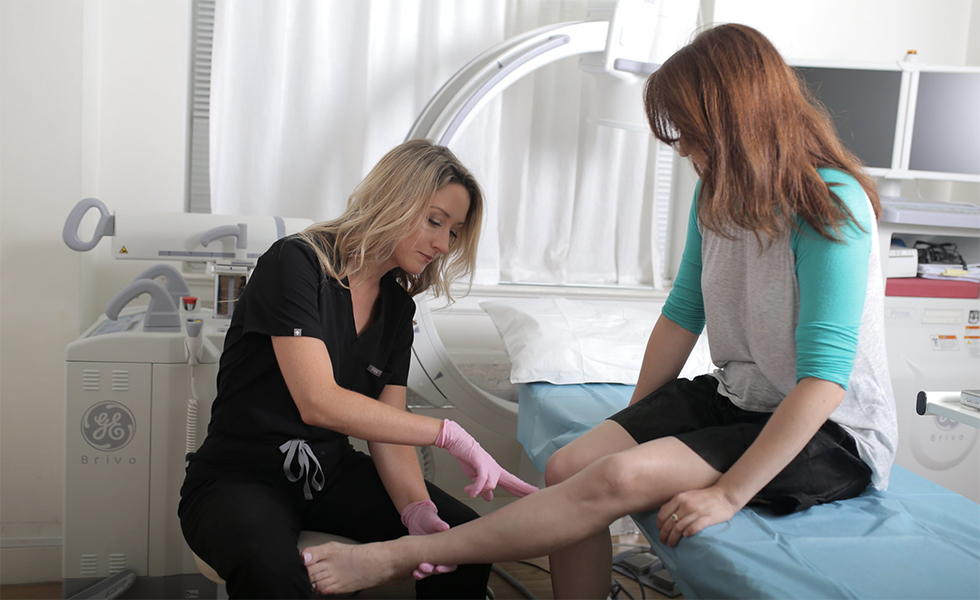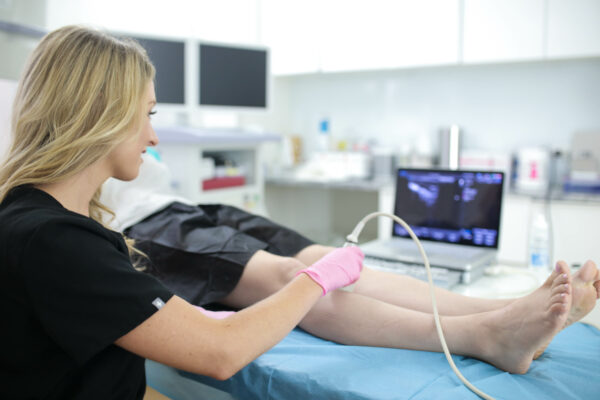The link between COVID-19 and blood clots in legs
Most people are now aware that COVID-19 leads to respiratory problems. However, if that weren’t bad enough, recent cases have shown that the coronavirus also increases the risk of blood clots in leg veins, also known as deep vein thrombosis.
Deep vein thrombosis is a condition wherein blood clots can develop deep in the leg veins. Over time, these blood clots can break away and move to the lungs and restrict oxygen and blood flow, inducing a potentially fatal condition known as pulmonary embolism.
According to research from France and the Netherlands, patients with coronavirus admitted to intensive care units have a 30% to 70% risk of developing blood clots in leg veins (deep vein thrombosis), and approximately 25% of ICU patients develop a pulmonary embolism.

How does COVID-19 increase the risk of blood clots in the legs?
COVID-19 may increase the risk of blood clots in leg veins because of hypoxia (oxygen deficiency), excessive inflammation, immobility, and diffuse intravascular coagulation, a condition wherein your body’s blood clotting capabilities go on overdrive.
When you’re injured, your body activates the immune system to encourage blood clotting. When the infection is as widespread as COVID-19, you experience a high degree of inflammation, which can lead to excessive blood clotting within veins and arteries, creating the perfect situation for blood clots in leg veins.

Another possible theory is that the coronavirus triggers blood clotting to increase its chance of survival. The SARS virus, another member of the coronavirus family, works with a blood-clotting protein within the body to increase its ability to invade cells. As such, it’s assumed that the coronavirus may have similar capabilities, but this theory hasn’t been proven yet.
COVID-19 is a relatively new disease, and the specific ways in which it affects the body are still being studied. As such, we may have clearer and more definitive answers later.
Chronic venous insufficiency and varicose veins, the leading risk factors for DVT
As shown above, COVID-19 increases the risk of deep vein thrombosis in the lower legs, especially for patients in intensive care units. However, the risk of deep vein thrombosis is even greater for patients with undiagnosed chronic venous insufficiency or varicose veins. Chronic venous insufficiency and varicose veins are the leading risk factors for deep vein thrombosis.
Venous insufficiency is a medical condition wherein your vein valves collapse or malfunction and fails to pump blood towards the heart. As such, gravity forces blood to flow backward and accumulate in the leg veins. The continued accumulation of blood in leg veins may lead to spider veins, varicose veins, leg ulceration, deep vein thrombosis, and other complications.
Varicose veins are bulging leg veins that protrude out of the skin’s surface in a twisted, tangled, and knotted form. They appear on your legs because of the continued accumulation of blood in leg veins due to chronic venous insufficiency. Studies have shown that patients with varicose veins are 5x more likely to develop deep vein thrombosis.
As such, chronic venous insufficiency, varicose veins, and deep vein thrombosis are all interlinked. If you have varicose veins or other signs and symptoms of venous insufficiency, you must seek vein treatment promptly.
Identifying chronic venous insufficiency and deep vein thrombosis
Chronic venous insufficiency is an extremely underdiagnosed condition because its initial signs and symptoms seem fairly benign. At its earliest stages, the signs and symptoms of vein disease can be mistaken for signs of aging or exhaustion, such as leg heaviness, frequent leg cramps, restless leg syndrome, leg pain, and leg swelling. These symptoms usually worsen at the end of the day or after long periods of inactivity.
You might be tempted to dismiss these signs and symptoms, but you shouldn’t, especially not with COVID-19 floating around.
If you have varicose veins or the signs and symptoms of vein disease, please contact reliable vein doctors near your location. Your vein doctor should perform vascular imaging tests, such as duplex ultrasound, to examine the direction of blood flow in your leg veins. This will reveal if you have chronic venous insufficiency or deep vein thrombosis, allowing the vein doctor to curate a personalized treatment plan.

How can I prevent varicose veins, chronic venous insufficiency, and deep vein thrombosis?
There are no sure means of preventing chronic venous insufficiency and deep vein thrombosis because they can occur due to numerous underlying factors.
Vein disease may occur because of genetic predisposition, pregnancy, hormonal changes, aging, and occupations involving long periods of sitting or standing still. Deep vein thrombosis may occur because of chronic venous insufficiency, COVID-19 infections, or a wide range of issues related to your vascular health and blood flow.
However, you can minimize the risk of vein disease and DVT with these tips:
- Wear compression stockings to facilitate blood flow towards the heart
- Engage in exercises that work your calf muscles, such as running, cycling, and swimming
- Don’t sit still for long periods of time — take short walking breaks every hour or so
- Elevate your legs above your heart’s level to facilitate blood flow towards the heart
- Stop smoking
- Follow CDC guidelines to minimize the risk of contracting COVID-19
If you have the signs and symptoms of venous insufficiency or deep vein thrombosis, please schedule an appointment online.








